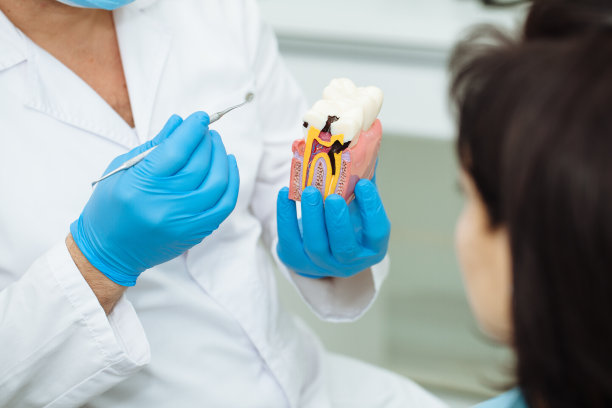Essential Steps and Precautions to Ensure Success During Root Canal Treatment for Optimal Patient Care
Summary: Root canal treatment, although often feared, is a vital procedure that saves numerous teeth each year. This article presents essential steps and precautions aimed at ensuring optimal patient care during such procedures. By focusing on proper diagnosis and treatment planning, meticulous cleaning and shaping, effective infection control, and thorough post-treatment follow-up, dental professionals can significantly enhance patient outcomes. Each section delves into critical considerations and methods that promote both the safety and success of root canal treatments, ultimately leading to improved patient satisfaction and health.
1. Accurate Diagnosis and Treatment Planning

The foundation of successful root canal treatment lies in accurate diagnosis. Dentists must carefully assess the patients symptoms, utilize advanced diagnostic technologies, and conduct thorough radiographical examinations. By accurately identifying the extent of infection or damage to the tooth, practitioners can devise appropriate treatment strategies. This step is paramount to avoid unnecessary procedures and to ensure the selected treatment aligns with the patient’s specific needs.
Once the diagnosis is established, a comprehensive treatment plan should be developed. This plan should encompass the procedural approach, expected outcomes, and any potential complications. Alongside the clinical aspects, it’s important to engage in open communication with the patient, informing them about the treatment process, expected duration, and aftercare. This transparency helps in setting realistic expectations and builds trust.
A well-structured treatment plan can enhance efficiency during the procedure, minimizing delays and complications. It should also be flexible, allowing for adjustments based on intraoperative findings. With careful planning, the outcomes of root canal treatments can be significantly improved, leading to higher success rates.
2. Meticulous Cleaning and Shaping Techniques
The cleaning and shaping of the root canal system is a crucial step in ensuring the success of the treatment. This process involves removing the infected pulp tissue and shaping the canals to facilitate subsequent filling. Using specialized instruments and irrigation solutions, dentists must carefully clean each canal to eliminate debris and bacteria. This meticulous approach reduces the risk of post-treatment complications.
The choice of instrumentation plays a vital role in this stage. Modern rotary instruments are designed to conform to the canal anatomy, providing efficient cleaning while preserving tooth structure. Additionally, utilizing irrigation solutions effectively enhances biofilm removal and disinfection. Dental professionals must be well-versed in these techniques and adapt them based on the unique anatomy of each tooth.
Moreover, attention to detail during this phase can significantly impact the outcome. Properly shaped canals not only facilitate effective filling but also reduce the likelihood of reinfection. Dentists should also regularly evaluate their instruments and protocols to incorporate the latest advancements in root canal techniques, thereby ensuring the highest standards of care.
3. Effective Infection Control Measures
Infection control is paramount in dental practice, and particularly crucial during root canal treatments. The root canal system is complex, and any remnants of bacteria can lead to reinfection. Dentists should implement stringent sterilization protocols for all instruments and ensure a clean environment. Utilizing barriers, such as gloves and masks, further prevents contamination.
During the procedure, adequate isolation of the tooth is essential. Rubber dams are commonly used to isolate the operative field, preventing saliva contamination. This isolation allows greater access and visibility, enabling dentists to perform meticulous cleaning and shaping. Moreover, effective irrigation techniques using antimicrobial solutions can diminish the microbial load in the canals.
Post-treatment, proper follow-up care is necessary to monitor for any signs of infection. Educating patients on the importance of maintaining their oral hygiene and attending scheduled follow-up visits can significantly contribute to long-term success. By implementing robust infection control measures, dental practitioners can ensure better outcomes for their patients.
4. Comprehensive Post-Treatment Care
Post-treatment care is a crucial component of root canal therapy that should not be overlooked. After the procedure, patients should receive clear instructions regarding recovery. This includes information about potential discomfort, medications prescribed, and when to report any unusual symptoms. Proper aftercare significantly increases patient satisfaction and reduces anxiety about the treatment.
Follow-up appointments are equally important. Dentists must schedule these visits to assess the healing process and ensure that the tooth is functioning correctly. Regular monitoring allows for early detection of any complications or reinfection, which can be addressed promptly. Additionally, follow-ups provide an opportunity for patients to ask questions and express any concerns.
Finally, ongoing patient education is essential. Dentists should discuss oral hygiene practices specific to a patient who has undergone root canal treatment. Regular cleanings, check-ups, and good home care can extend the life of the treated tooth, ensuring its longevity and functionality.
Summary:
The steps and precautions outlined in this article are vital for the successful execution of root canal treatment. Through accurate diagnosis, meticulous cleaning techniques, stringent infection control, and comprehensive post-treatment care, dental practitioners can ensure a positive outcome for their patients. By adhering to these best practices, they not only enhance the success of the procedure but also improve overall patient satisfaction with their dental care experience.
This article is compiled by Vickong Dental and the content is for reference only.



